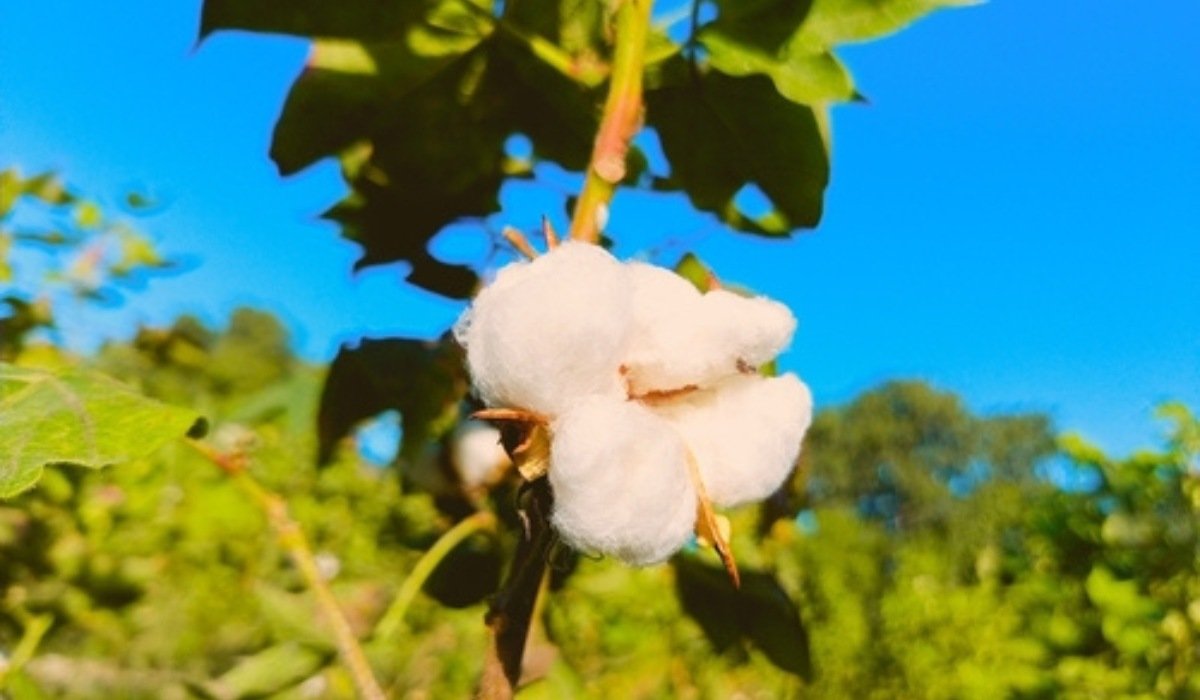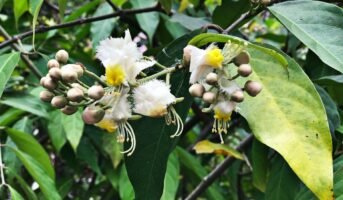Cotton is derived from plants belonging to the genus Gossypium which are members of the tribe Gossypieae in the family Malvaceae. Cotton is also known as pima. Its natural habitats are found in the subtropical and tropical zones of both the Old and New Worlds.
It is estimated that there are around 50 species of Gossypium, making it the most extensive genus in the tribe Gossypieae; nonetheless, new species are continuously found.

Source: Pinterest
Gossypium: Key Facts
| Scientific Name | Gossypium |
| Common Name | Cotton |
| Family | Malvaceae |
| Soil ph | 6.0-6.5 |
| Maximum Height | 2 metres |
| Sun exposure | Partial |
| Maintenance | Easy |
Gossypium: Features
- The plants that belong to this genus are typically shrubs or plants that resemble shrubs; however, the species that belong to this genus have an extremely diverse array of morphologies and adaptations. For example, in Australia, there are fire-resistant herbaceous perennials, and in Mexico, there are trees.
- The height of plants in current cropping systems ranges from one to two metres.
- The leaves are large and lobed, often having three to five lobes but occasionally having seven. Each seed is encased in a capsule that is referred to as a “boll,” and this capsule is surrounded by fibres of two different sorts.
- The four commercial species of the cotton plant are Gossypium hirsutum, Gossypium barbadense, Gossypium arboreum, and Gossypium herbaceum.
- Cotton fibres can be found in their natural state as white, brown, green, or a combination of these three colours.
Gossypium: Growing tips
- Plant two to three cotton seeds in the soil of peat pots that are four inches wide and filled with compost. Plant the seeds in the peat pots at a depth of approximately half an inch to one inch.
- Position the peat pots in a bright spot near a window where they will get enough sunlight. Maintain a temperature of around 65 to 68 degrees Fahrenheit for the seeds. Every other day, give the peat pots a very little bit of water so that the seeds will always have a moist environment.
- After the cotton seeds have germinated and begun to sprout, separate the stronger seedlings from the weaker ones in each peat pot. It is okay to keep one cotton seedling that is robust and healthy in each container.
- When the cotton plants have outgrown the peat pots, cut the bottom off of the peat pots and put the cotton plants into planter pots with a diameter of 12 inches. Instead of using a peat-based potting compost combination, you should use loam-based potting compost in the planter pots.
- Move the cotton plants outside into the direct sunlight on days when the temperature is well over 65 degrees Fahrenheit, and there is no significant chance of precipitation. When the temperatures begin to drop, bring the plants indoors and set them up in a bright window when possible.
- Give the cotton plants an application of a liquid plant fertiliser that is rich in potash (potassium) once each week. Alternatively, you can use a tomato food or rose food product that is commercially available. Always be sure to follow the recommendations on the packaging when applying fertiliser.
- Cotton does not like too much water. Cotton seedlings and mature plants should be watered twice or three times a week to thoroughly saturate the soil around their roots. In between waterings, the top layer of the potting mixture should be allowed to get only slightly dry.
- After 45 days from the time of planting, large yellow blooms will begin to bloom. After roughly 130–150 days from the time of planting, the flowers wither and turn into balls, which then split apart to reveal fluffy cotton.
Gossypium: Maintenance tips
- To provide the best care for your cotton plants, you will need to water them often throughout the warm summer months.
- The plants will start to produce branches at about the four- to five-week mark. At the eight-week mark, you should start to observe the first squares, and shortly after that, the flowers will start to appear.
- After the blooms have been pollinated, they will change from creamy white to pink in colour. When this happens, the plants will start to produce a ball.
- It is vital to provide water during this entire process in order to guarantee satisfactory levels of development and output.
- When all of the cotton bolls have opened up, and the plant seems to be a fluffy ball, it is time to begin harvesting the cotton. This often takes place within the first four months after the plant has been planted.
- Shortly before the bolls fracture, the cotton plants in growth will naturally lose their leaves and dry up, which will occur just before the bolls break.
- They are extremely vulnerable to a wide variety of weeds, which are in direct competition with them for water, nutrients, and exposure to sunshine.
- Techniques and approaches for the management and control of cotton weeds might vary greatly from country to country.

Source: Pinterest
Gossypium: Uses
- The manufacture of textiles for use in clothes is the primary application for cotton lint.
- The fibres are then twisted into yarns, which are then weaved into garments on the farm, in homes, or manufacturing facilities.
- Cotton is a popular choice for clothing since it is soft, breathable, durable, and resistant to stains, despite the fact that it is not resistant to wear and tear at all.
- These plants can be used to treat a variety of conditions, including women’s menstrual cycle cramps and irregular bleeding.
- It is used for gastrointestinal difficulties such as haemorrhages and diarrhoea, as well as for nausea, fevers, and headaches.
- Cotton seeds have the potential to be an extremely rich source of food or animal feed since they contain up to 20% oil and 20% proteins.
- The gossypol that is produced from cotton seeds has the potential to be used as a male contraceptive. However, following continuous usage, the gossypol can lead to permanent infertility.

Source: Pinterest
FAQs
Is cotton a fruit or a flower?
Cotton bolls are considered fruits because they have approximately 32 immature seeds
Is Gossypium poisonous?
The component gossypol, produced from cotton seeds, has toxic effects.
Housing News Desk is the news desk of leading online real estate portal, Housing.com. Housing News Desk focuses on a variety of topics such as real estate laws, taxes, current news, property trends, home loans, rentals, décor, green homes, home improvement, etc. The main objective of the news desk, is to cover the real estate sector from the perspective of providing information that is useful to the end-user.
Facebook: https://www.facebook.com/housing.com/
Twitter: https://twitter.com/Housing
Email: [email protected]











